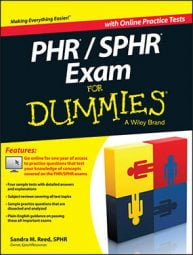In designing exam objectives, HRCI (Human Resources Certification Institute) uses a practice analysis study (PAS), in which a job analysis of sorts is conducted on the work of HR, producing the industry's job description. Two primary elements make up this job description:
Exam objectives: They describe the responsibilities of a HR professional and are independently numbered for each functional area.
Core knowledge requirements: They describe the knowledge necessary to execute the responsibilities. The CKR are consecutively numbered, representing all exam functional areas.
As an experienced HR practitioner, you're probably familiar with the process of creating job descriptions. It begins with a thorough analysis of the tasks, duties, and responsibilities of the job, followed by an in-depth compilation of the individual knowledge, skills, and abilities that an individual must have for successful performance.
The PAS is boots-on-the-ground action, which means that HRCI uses a taskforce to review the exam objectives and knowledge statements to remove obsolete items or make the necessary changes to keep the objectives relevant. HRCI also conducts a validation survey, in which HR professionals are asked to rate the percent of time spent on each task in the current BOK and the importance of the knowledge statements. The PAS is conducted approximately every five years, with any changes reflected in the exam updates.
This information is important to you because it underscores the importance of both the exam objectives and CKR as you prepare for the PHR and the SPHR.

